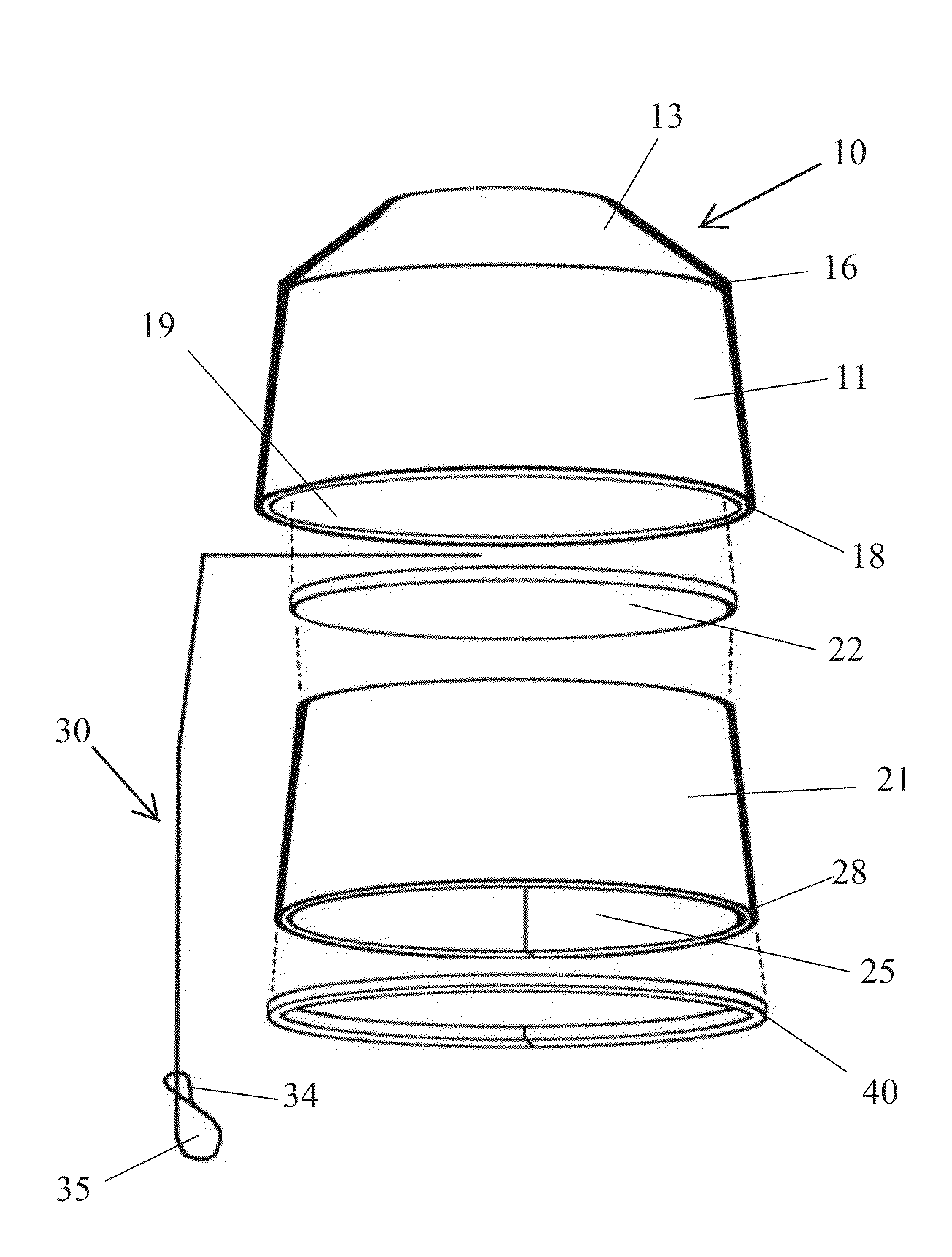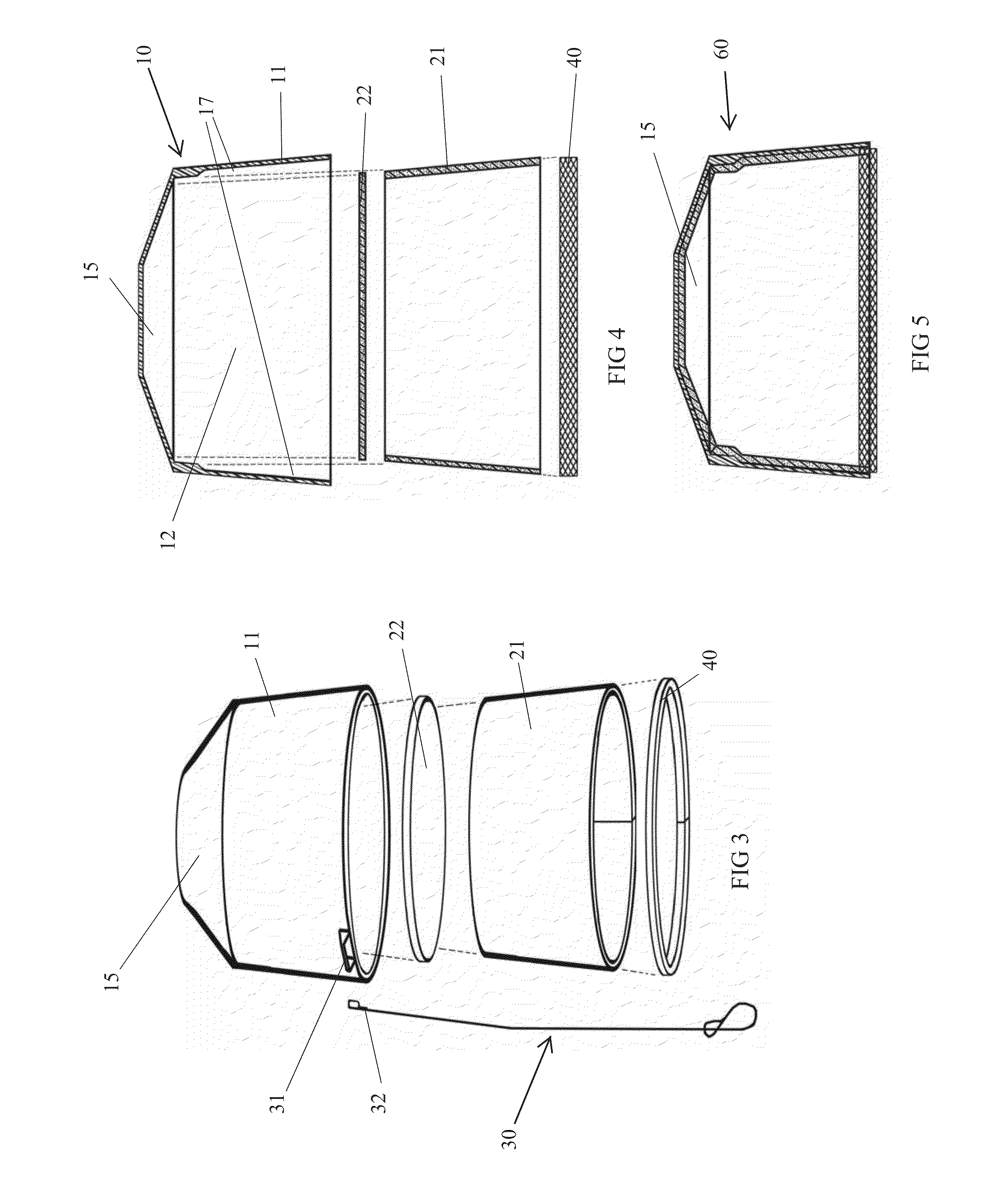Protective Lens Cover
- Summary
- Abstract
- Description
- Claims
- Application Information
AI Technical Summary
Benefits of technology
Problems solved by technology
Method used
Image
Examples
Embodiment Construction
[0039]Detailed embodiments of the present invention are disclosed herein. It is to be understood that the disclosed embodiments are merely exemplary of the invention, and that there may be a variety of other alternate embodiments. The figures are not necessarily to scale, and some features may be exaggerated or minimized to show details of particular components. Therefore, specified structural and functional details disclosed herein are not to be interpreted as limiting, but merely as a basis for teaching one skilled in the art to employ the varying embodiments of the present invention.
[0040]An overview of the main components of the invention is shown in FIG. 1. The lens cover 60 consists of a protective outer cup 10, a padded inner liner 20 placed inside, and a tether 30 that allows the lens cover 60 to be easily attached to a camera. The lens cover 60 is a frusto-conical cylinder created by a beveled side wall 11, with a raised domed top 15 attached at the top end. The inner liner...
PUM
 Login to View More
Login to View More Abstract
Description
Claims
Application Information
 Login to View More
Login to View More - R&D
- Intellectual Property
- Life Sciences
- Materials
- Tech Scout
- Unparalleled Data Quality
- Higher Quality Content
- 60% Fewer Hallucinations
Browse by: Latest US Patents, China's latest patents, Technical Efficacy Thesaurus, Application Domain, Technology Topic, Popular Technical Reports.
© 2025 PatSnap. All rights reserved.Legal|Privacy policy|Modern Slavery Act Transparency Statement|Sitemap|About US| Contact US: help@patsnap.com



